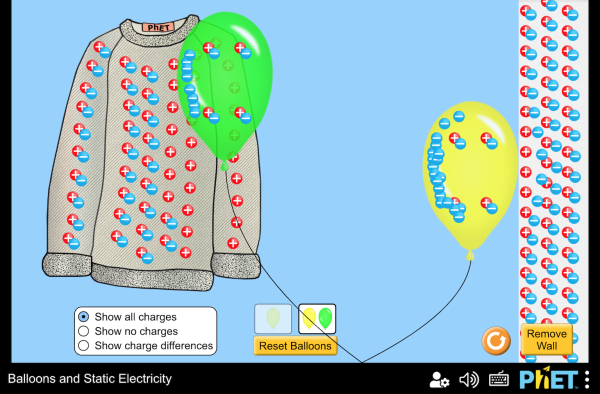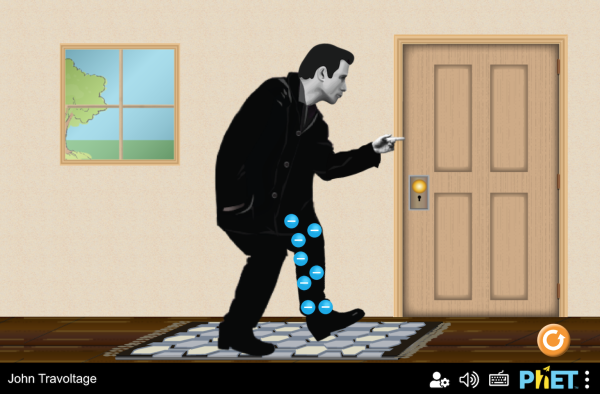Summary
- Electric charge
- Electrostatics
Illustrative applets:
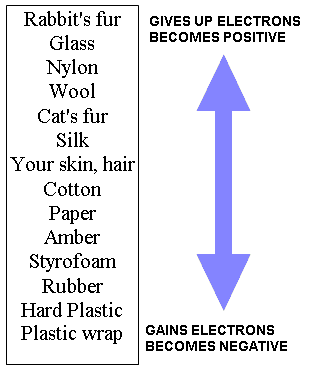
- Electrical forces
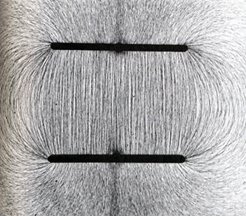
- Electric field

- Lecture learning outcomes
A student who masters the topics in this lecture will be able to:
- describe the basic features of the electrostatic force between two charges
- use algebra to find the numerical value of force F, charge q1,
charge q2, or separation distance r when any three of these quantities are given
- describe the difference between electric force and electric field and distinguish their units
- draw or interpret an electric field diagram in terms of either vectors or lines of force
Practice:
Try these additional examples
Example #7
Example #8
Prepare:
Read textbook section 20-1 before the next lecture
kw4
Two small spheres separated by 2 m contain negative charges of 2 C and 3 C. What is the electric force between them?
A. +1.35×1010 N
B. −1.35×1010 N
C. +2.70×1010 N
D. −2.70×1010 N
Answer
gc6 16.2
How many electrons make up a charge of −30.0 µC?
A. 3.00×10−6
B. 3.33×105
C. 1.87×1014
D. 6.25×1018
Answer
sb5 23.5
Suppose 1.0 g of hydrogen is split with the protons on the north pole and electrons on the south. What is the compression force on the earth?
A. 5.74×10−42 N
B. 1.73×102 N
C. 6.55×104 N
D. 5.14×105 N
Answer
gc6 16.32
The electric field midway between two equal but opposite point charges is E = 745 N/C, and the distance between the charges is d = 16.0 cm. What is the magnitude of the charge on each?
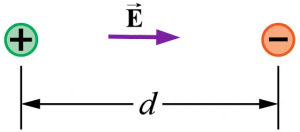
A. 3.31×10−9 C
B. 2.65×10−10 C
C. 4.14×10−6 C
D. 3.02×108 C
Answer
pop4 19.qq.5
Rank the magnitudes of the electric field at points A, B, and C in
the figure.
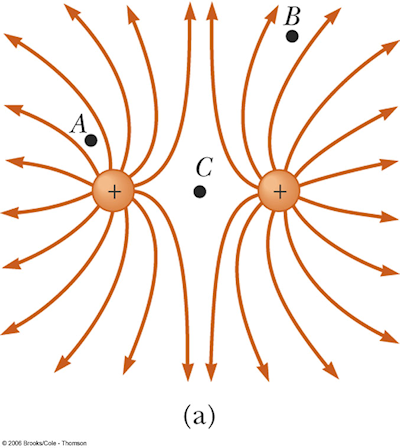
1. C > B > A
2. B = A > C
3. C > A = B
4. A > B > C
5. B > A > C
Answer
Walker5e EYU 19.5
The electric field lines for a system of two charges is shown below. Which of the following could be the
correct charges 1 and 2?
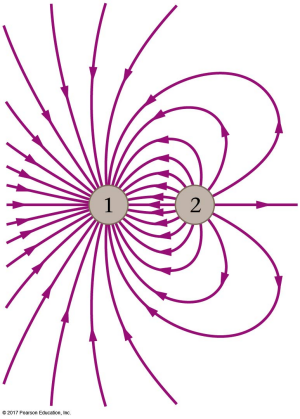
A. q1 = +32 µC, q2 = −16 µC
B. q1 = −32 µC, q2 = +16 µC
C. q1 = −16 µC, q2 = +32 µC
D. q1 = −16 µC, q2 = −32 µC
Answer
APB 1998.16
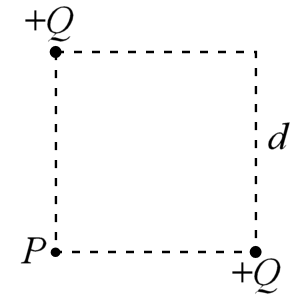
The figure above shows two particles, each with a charge of +Q, that are located at the opposite corners
of a square of side d. What is the direction of the net electric field at point P?
A. ↖
B. ↗
C. ↙
D. ↘
E. ↓
Answer
APB 1998.13
Which of the following is true about the net force on an uncharged conducting sphere in a uniform
electric field?
A. It is zero.
B. It is in the direction of the field.
C. It is in the direction opposite to the field.
D. It produces a torque on the sphere about the direction of the field.
E. It causes the sphere to oscillate about an equilibrium position.
Answer
A. +1.35×1010 N

C. 1.87×1014

D. 5.14×105 N

B. 2.65×10−10 C


4. A > B > C
The field is strongest where the lines are most closely spaced.

B. q1 = −32 µC, q2 = +16 µC
The electric field lines converge toward charge 1 and away from 2, which means
charge 1 is negative and charge 2 is positive. Because there are twice as many lines connected to charge 1 as there
are connected to charge 2, the magnitude of q1 must be twice the magnitude of q2.
C. ↙
The electric field points away from positive charges, thus the contribution from
the upper left Q at point P is downward and the contribution from the lower right Q at
point P is toward the left. The vector sum of these two contributions is down and to the left.
A. It is zero.
The electrons on the conducting sphere will move around in response to the electric
field, which represents force per charge. Positive charges on the conducting sphere will be pushed in the direction
of the field and negative charges will be pulled in the opposite direction. Because the field is uniform these two
forces are equal in magnitude and opposite in direction, resulting in a zero net force on the sphere. If the field
were nonuniform, such as the field due to a nearby charged object, the attractive force on the near side of the
sphere would be stronger than the repulsive force on the far side, and the neutral sphere would be attracted to the
charged object. This is the idea behind induced polarization, such as when a charged balloon sticks to a neutral wall.



